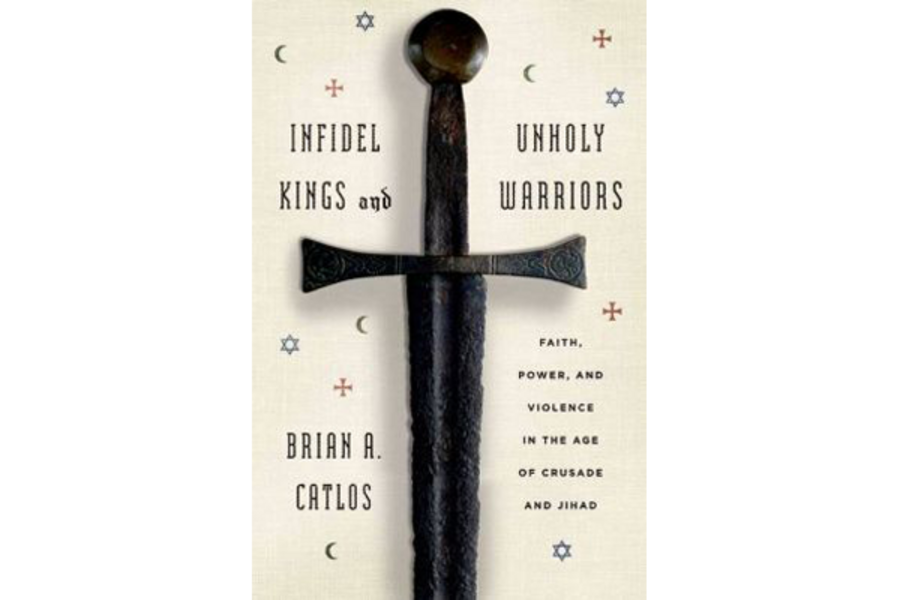'Infidel Kings and Unholy Warriors' brings nuance and complexity to the age of Crusades
Loading...
The Norman conquest of England in 1066 has become by far the most famous of the Normans’ many raids and invasions. But five years before changing the course of English history, they launched an invasion of a smaller island with more immediately obvious strategic value: Sicily. Compared to 11th-century England, Sicily was extraordinarily diverse and cosmopolitan. There were Latin-speaking Christians with ties to Europe, Arabic-speaking Muslims from North Africa and Egypt, and Greek-speaking Christians loyal to the Byzantine Empire. For a ruler who could shrewdly manipulate the island’s complex politics, the potential to secure trade agreements and military alliances was enormous.
When it’s remembered at all, the tumultuous period of Mediterranean history that spans the 11th and 12th centuries is usually depicted as the age of the Crusades, a violent time of stark contrasts between fundamentally opposed cultures. A thoughtful new book by Brian Catlos adds nuance and complexity to this common narrative. In Infidel Kings and Unholy Warriors: Faith, Power, and Violence in the Age of Crusade and Jihad, he stresses the many moments of cultural integration and strategic cooperation that blurred the ostensibly strict categories of identity in this period.
When two Norman brothers began their conquest of Sicily in 1061, they had no intention of converting or displacing the Muslims and Greek Orthodox Christians on the island. Instead, they employed an advanced bureaucracy staffed with religious minorities in many prominent positions. Administrative affairs were conducted in Arabic and Greek, partly for efficiency – the Arabic number system was far easier than Roman numerals – and partly to prevent Latin-speaking rivals from grasping the inner workings of the regime.
It was an age of fluid identities and blended cultures. The Sicilian town of Palermo, for instance, had over 300 mosques. In one, Christians prayed during times of drought to a casket suspended from the ceiling that supposedly contained the bones of the Greek philosopher Aristotle. With Christians praying to the relics of a pagan philosopher in a mosque, Sicilian society was an intricate mingling of many distinct traditions.
Catlos provides many other fascinating examples of cultural cross-pollination from around the Mediterranean. The Spanish peninsula was conquered by Muslims in 711, but within a few centuries many Spanish Christians and Jews spoke Arabic. They dined, dressed, and often behaved in accordance with Islamic tradition. The first analytical treatment of Jewish theology – Rabbi Saadia Gaon’s "Book of the Articles of Faith and Doctrines of Dogma" – was actually written in Arabic.
This is not to say that life in the medieval Mediterranean was only characterized by the harmonious coexistence of diverse cultural and religious groups. Frequent and dramatic violence was an undeniable reality in these centuries. One king in Islamic Spain used the skulls of slaughtered enemies as planters for his garden. Cities from Córdoba to Palermo to Jerusalem were sacked, and many civilians were indiscriminately slaughtered. But while the rhetoric of religious confrontation was often used during these conflicts, relatively peaceful coexistence resumed once stable relations between regional powers were established.
Catlos argues convincingly that crusades and jihads were not primarily religious phenomena. Often religion was little more than a convenient justification for wars whose true motives were more complicated: desire for power, access to lucrative trade routes, and strategic maneuvering in a complex political landscape.
Of course religious ideology did help motivate both soldiers and rulers at times, and there were undeniable cases of religious persecution and scapegoating. But these cases tended to emerge only when deeper forces destabilized a region. And even during periods of intense turmoil, Christians and Muslims often fought side by side against members of their own religions. Sectarian squabbling within religious groups was far more common than grand clashes between East and West, Christianity and Islam.
After one of the Norman conquerors consolidated his control of Sicily, he proclaimed himself king and ordered an elaborate silk cape to be sewn for his coronation ceremony. It depicted a lion devouring a camel, a clear symbol of Christianity triumphing over Islam. But the beautiful calligraphic lettering on its borders told a different story: the writing was in Arabic.








